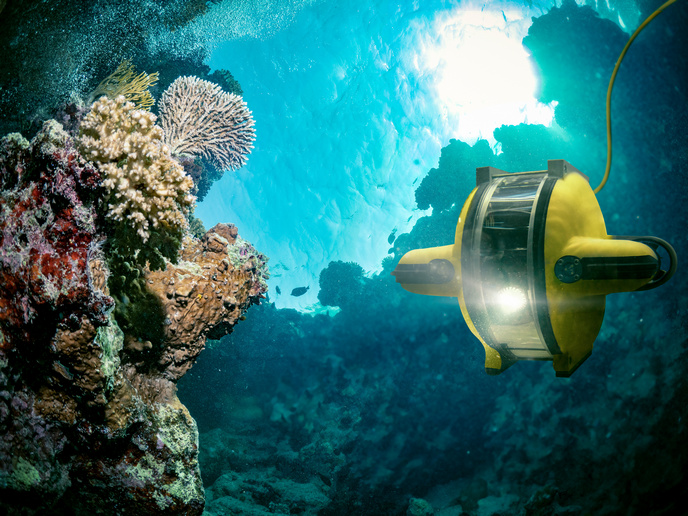Risk-aware AI makes underwater robots more reliable
Underwater robotics plays a critical role in sectors such as offshore wind, oil and gas, mining, and marine science. Yet deploying robots in these environments poses unique risks. Communication underwater is extremely limited, which means robots must act autonomously and reliably, without human oversight. The EU-funded REMARO project(opens in new window) set out to address this challenge by combining artificial intelligence (AI), robotics, and formal verification techniques into a new framework for trustworthy marine autonomy. The project trained 15 early-stage researchers and partnered with leading industrial labs to ensure that advances in theory could be tested in practice.
Autonomy as the foundation of reliability
A key lesson from REMARO is that autonomy and reliability cannot be developed separately. As project coordinator Andrzej Wasowski explains, “Underwater robots cannot operate without autonomy. Their reliability relies on autonomy. Here, reliability is not about building more robust actuators but mostly about the robot being able to recover autonomously from unexpected developments when no human can control or monitor it.” This focus on autonomy was not only driven by academic goals but also by industry demand. Companies working with costly and safety-critical equipment emphasised that unpredictability in AI algorithms under rare conditions was unacceptable. As Wasowski notes, “Current AI methods do not deliver this. For companies, that uncertainty is a serious risk.”
From simulation to real underwater data
Vision and localisation tasks proved particularly challenging when moving from simulations to open water. Conditions not only differ from land environments but can vary dramatically between sites or even within the same location over time. This variability made it clear that training AI solely on large datasets was unsustainable. To reduce dependence on massive amounts of variable data, REMARO researchers explored architectures capable of performing with limited training inputs. This shift has opened up new research directions for AI models that are more adaptable and robust under changing underwater conditions.
Integrating cognition and safety
One of the project’s most innovative advances came from co-designing safety and cognitive planning. Traditional planners optimise for expected outcomes, like travel time or energy use. But as Wasowski points out, “Planning for expected collision risk or battery consumption is often too optimistic. In this work, we developed a method for a robot to create many alternative plans and choose not the one that has the best expected result but the one that can promise reaching the result reliably, at low risk.” This risk-averse planning approach represents a fundamental shift, ensuring robots prioritise robustness over efficiency when operating in uncertain conditions.
Cross-disciplinary breakthroughs
REMARO’s success lay in its interdisciplinary training network. Researchers from formal methods, robotics, and AI collaborated on real-world deployments, including programming controllers for underwater vehicles at Ocean Scan in Porto. The project also achieved a rare breakthrough in releasing open datasets, such as the SubPipe benchmark, without compromising industrial confidentiality. By combining academic innovation with industrial needs, REMARO has advanced the state of the art in reliable autonomy. Its legacy includes not only methods and tools but also a new generation of experts ready to carry these advances into Europe’s blue economy. Readers can also hear directly from the PhD researchers themselves in a video prepared for a recent Marie Skłodowska-Curie conference, where they share their experiences working at the cutting edge of underwater robotics and AI. To watch the video, press here(opens in new window).







